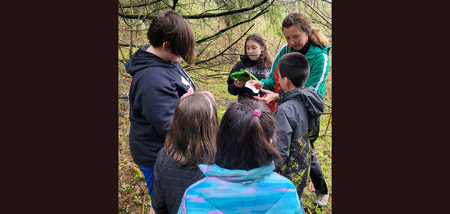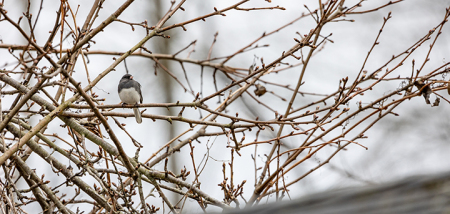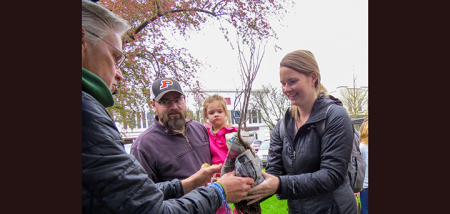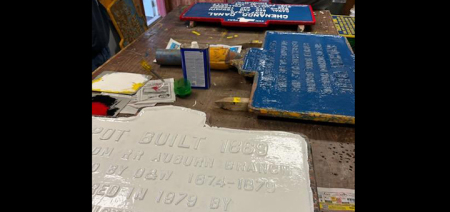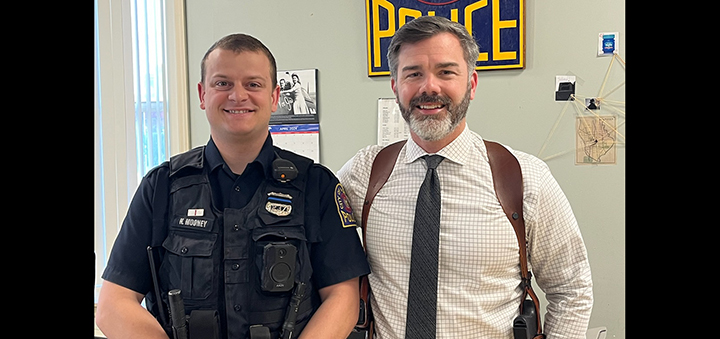Trip To Italy Part IV: The Rhythm Of The Day
Published:
November 9th, 2006
By:
Mary Musson
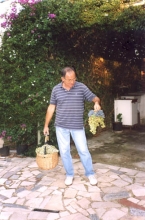
By Mary Musson
Correspondent
It wakes me up every morning at six-thirty, that clip clop of horses. At first, I think I am in Amish country, a favorite vacation spot of mine where I stay with a Mennonite family and live their life for one weekend every year. Then I remember I am in Italy and I throw back the bedding and rush to the window to take a look. By now, I know how to roll up the metal shutter that guards windows in Italian homes ( “We can not sleep unless the room is absolutely dark” my cousin Mariella tells me) and I do so quickly and step out on the balcony to await one of my favorite sights thus far: farmers going to work in the fields. This is a rare sight these days as most of them drive modem vehicles, but this is a rickety old wagon pulled by two giant work horses and driven by a man straight out of central casting: “Get me an Italian farmer type,” yells the director, “weather beaten face, rough veined hands, old work clothes – red knit shirt, dark pants, thick wool cap ... quick, I want a real contadino!” This colorful farmer and his two companions remind me of my grandfather Pansini, who was also a farmer. I hear them speaking the old Molfettese dialect as the cart passes my window. My God, how I love this dialect!
There is nothing in the world as satisfying for the traveler and house guest I often am than to have my hosts proudly introduce me to their circle of friends and I have scored big on this trip; I am very popular and invited out often. The main attraction is the fact that I not only speak fluent Italian, but I also speak their Molfettese dialect, a rough and tumbled language with remnants of all the invaders that have sacked this seaside community since the 11th century. They love to hear me speak it, especially the profanities which have them doubled over in laughter. More than 20 years have passed since my last visit to Italy, yet the language returned with a speed and accuracy that amazed even me. There are not many opportunities to speak Italian in Norwich. A few people in this town, most of them descendants of immigrants from the Lipari Islands near Sicily, speak a few mumbled words, but are put off when I respond in “real” Italian. The only person in town who speaks it with me is Frank Speziale the photographer, and we greet each other in the language whenever we meet. When I told him I was going to Italy for a month he begged me to take him with me, a similar plea on my part years earlier when he told me he was going. We Italians always want to go back to Italy, especially when summer comes and we get nostalgic for cool Italian nights and long walks by the sea.
Don’t get me wrong, I love my life in upstate New York. We live in my husband’s hometown and I was welcomed here 32 years ago with open arms and responded by becoming a mainstream volunteer, a high community standard in Norwich and I have always, even when working full time and raising three children, served on community boards and committees indulging my passion for historical preservation, the arts and gardening. My husband and I garden three of our acres where we have created a small bit of heaven for ourselves and our family dotted with fruit trees, raised flower beds, rolling lawns (which take us five hours a week to mow) and a large pond.
“You actually own a lake?” my cousin Tonio asks.
“No, not a lake, a pond,” I respond.
“How deep is it?” when I tell him he says, “That’s a lake!” And he proceeds to tell all his friends that his American cousin owns her own lake and shows them pictures of our small house by the water with pride.
But it isn’t my house that his friends want to know about – no, they are aggressively curious about American politics, religion, social class structure, education and my lifestyle, so I spend many hours sitting at kitchen tables and outdoor cafes engaged in long conversations. Obviously, there are comparisons and criticisms hurled at me. “Why are Americans so fat? Why don’t they have a bidet in their homes? How can they make so much money and yet be so much in debt? Why do they need such big houses and so many cars? How could they have voted for Bush??” I answer as diplomatically as I can, flattered by the fact that they keep asking the questions of me with the “they” not the “you” meaning that they see me as an Italian living in America privy to all its benefits, yet not quite responsible for all its ills.
I also ask my questions and get direct answers. It is economics that interest me. What do they earn and how do they spend their money? I find out that with two wage earners in the family the yearly net is less than $35,000 per year. Yes, it is true that they own their homes (two bedroom condos in four- to six-story buildings) usually inherited or paid for by their parents, but they pay a monthly maintenance fee of $50 which includes the complex’s electric, water, cleaning and gardening services, elevator maintenance and an administrator as well at $150 per month for their home’s water, electric and gas. Television (which is a national addiction) costs $200 per year for state-run television and $50 per month for cable. The phone, they tell me, is also expensive because they have a land line as well as cell phones. I couldn’t get a fix on cost because I can’t mention the telephone bill without them aiming a machine gun tirade in my direction about the extravagant phone use by the younger generation. Since their children tend to live at home until they marry (sometime in their late 20’s or early 30’s), the Molfettese have created a unique tandem relationship with their young, fraught with all kinds of complexities and dependencies.
Health care was another hot topic; yes, it is nationalized, “But just try and get an appointment or exam,” they say, “you can die waiting,” and so most people use private clinics and doctors and pay out of pocket. “And what about college?” I ask, since they all want their children to attend. Few Molfettese send their kids away to school since the cost is too high and since there are no private universities in the area. Most students commute by train to the University of Bari, about 40 minutes away, and annual costs for this college education are less than $800 per year.
As I take my notes and smile with anticipation at telling Americans back home all these juicy facts, it is the next bit of info that I can’t wait to put down on paper. OK, get ready all you complainers in our local “30 Seconds” newspaper column, the price of gas is $9 per gallon. Italians walk everywhere and take public transit as much as possible in the big cities, but in Molfetta they speed around in small economical foreign made cars – Suzukis, Volkswagens, Nissans and Fords. For prestige, they do keep a few Peugeots, Alfa Romeos and Mercedes in tightly secured garages and drive them only on special occasions like picking me up at the airport. Out of necessity, some of my cousins have vans and SUVs like cousin Diana’s husband, Enzo, a civil engineer who spends a great deal of time at construction sites; he spends $130 to fill his car’s tank.
As much as I like these conversations with my cousins and their friends, I find them tiring and so there are days when I ask them to forget I am American and they let me live as an Italian, which I enjoy very much. I am being hosted during my month-long stay by my cousin Rino and his wife Maria. It was a good choice, no doubt influenced by Zia Pina, the family matriarch who is Rino’s mother. These cousins are both newly retired and have time to chauffeur me around. Since their two sons, Michele and Antonio, are engineers who no longer live at home, I have been offered their lovely room as my sanctuary. Although, other cousins (there are 20 of them living nearby) often stop by to take me out for the day, it is time at home with Rino and Maria that I really enjoy.
What follows is a typical day in Molfetta. I’m up by seven and join Rino in the kitchen for a large cup of espresso with steamy milk; this is the only milk I am allowed all day. Italians do not drink milk, considering it hard on the digestive system and fattening. They prefer to get their calcium from broccoli and cheeses like mozzarella and ricotta. We share a few biscuits or perhaps a brioche and chat. The television is already on and turned to the news channel; it will remain on the whole time we are in the house and only when I beg to please turn it off during dinner, do they respond. After breakfast, he leaves for the country where he owns a beautiful two-acre garden of olive and fruit trees, grape vines and decorative palms and evergreens. This gardening is a new passion for him since he retired as a mechanic working in a local industry. His schooling is in the maritime trade and he was a cargo ship’s officer for years earning great wages and securing a good pension for himself, but when his boys were born he fell in love with them (as all Italian papas do) and sought a local job to be home with them and his beautiful wife Maria Rosa.
Maria represents the new generation of Italian female baby-boomers. She worked as an occupational therapist at a local clinic the whole time she raised her boys. She speaks Italian as beautifully as it should be spoken – slowly, melodically, tongue on back teeth with no nasality or deep guttural sounds. I can tell she’s spent a great deal of her professional life dealing with handicapped children; she is patient and kind and empathic. We talk non-stop on the mornings we stay home to do laundry and cook or on the mornings we go to the hairdresser or shop the local markets and do our banking. By noon we await Rino’s arrival from the country and add the peaches, apples, figs, cactus fruit and grapes to the big bowl of fruit always present on the dinner table. By one o’clock we are sitting down to our main meal of the day, as is everyone else in town. All over Molfetta (and probably all of Puglia) the kids are home from school, the students from universities, the shop keepers have closed their shops to reopen at five and stay open until nine, and most of the husbands lucky enough to work locally are home for this meal and a quick nap before returning to work where they will remain until seven o’clock.
Because I have asked her to cook me regional foods, we eat lots of legumes – lentils, split peas, and white beans – seasoned with olive oil, salt and fresh parsley. I also see the Spanish influence in dishes which remind me of paella – mussels and chick peas over risotto which has been flavored with bits of melted smoked mozzarella. Meat is used sparingly in most Molfettese homes, with a meat-infused ragu sauce served over fresh pasta on Sunday, perhaps a small roast chicken mid week and on special occasions, a small meatloaf made of veal, lamb and pork steamed inside a tin foil dome made to resemble a large mushroom when served on the plate.
After dinner and clean up, I go to my room, a practiced tradition of mine when I am a guest in someone’s home because I think it is a considerate gesture to my hosts. It gives them some peace and quiet and relieves them of conversation and attentive entertaining. By four o’clock the household is in full gear again as Rino works on his computer and Maria speaks to her kids and girlfriends on the phone. By five, we are dressed up and out for the rest of the day. This is visiting time in Italy, a time to connect with elderly parents or aunts and uncles, a time to visit with grandchildren or relatives confined to hospitals or nursing homes.
By seven o’clock there is a crowd downtown and the evening stroll begins. This is what I miss most in America. Because of my husband’s job as a school administrator we have lived all over New York State including Lake Ontario and Long Island, places where there is water and the opportunity to stroll on a warm summer’s night. As someone once wrote, “Americans have not promenaded since Victorian times,” and it’s a darn shame, too. It especially irked me when we lived on Long Island where the south shore’s ocean is dominated by state parks which close at dusk and the north shore’s sound is dominated by rich people’s homes with big stay-away signs which claim “private property.” The rare exception was the lovely town of Northport where my husband and I often went for dinner and a stroll in their waterside park, but unlike Italy, we never met anyone we knew with whom we could chat a bit.
In Molfetta, the evening stroll is a time to catch up on all the local news and, or course, gossip! Well let me tell you, having lived in so many places where I was the new kid on the block and knew no one – a little gossip is a good thing. Remember that great line from the play Steel Magnolias, “If you haven’t got anything good to say about anyone, just pull up a chair and sit next to me!” I love gossip, face it, we all do and understanding both Italian and the Molfettese dialect, I was privy to a lot of information. I loved hearing their concerns, joys and fears and boy are they fearful! The whole town – no, make that the whole country – is afraid of being robbed. There are endless stories of cars and scooters stolen and thieves entering homes (this latter news received with many signs of the cross and prayers of protection) and I wonder how I can get statistics on the actual crime rate in this town of 70,000 where everyone bunkers down at night with metal shutters and security alarms and locks their car every time they leave it for five minutes or more. I’m betting there is not as much crime as they think, but who am I to spoil their obsession with security and spreading bad news? This is after all a society which is not only big on wine, music and song but also pain and suffering ... or am I the only one who is a little distracted during Mass by the mournful look on all the statues in church?
And speaking of churches, I visited some great ones during my time in Italy, but my favorite is Molfetta’s Duomo (a name given to an old important church in the town) built in the 12th century and dedicated to San Corrado. It is recognizable at long distances by its double stone towers and visited often by tourists who can’t get enough of this giant masterpiece in stone as well as the old town, Molfetta Antica, attached to it and now a national historical site. Each time I visit this church, I go inside and walk around in awe as I look up to its gigantic domed ceiling. I kneel at its marble altar rail and admire the artwork on its walls. I stand at the baptistery and imagine what family baptisms were like when my baby uncles, aunts and cousins were welcomed into the faith. When I gently touch the carved stone lintels, doorways and holy water fountains that artists like my father carved, I thank the great stone masons of Puglia for giving so much to the world. It isn’t everyone who is privileged enough to leave something of worth behind in this life; they certainly did, and I hope that through this writing, I will as well.
The conclusion of this five-part series will be published in Friday’s Evening Sun.
Author: Mary Musson - More From This Author
Comments
